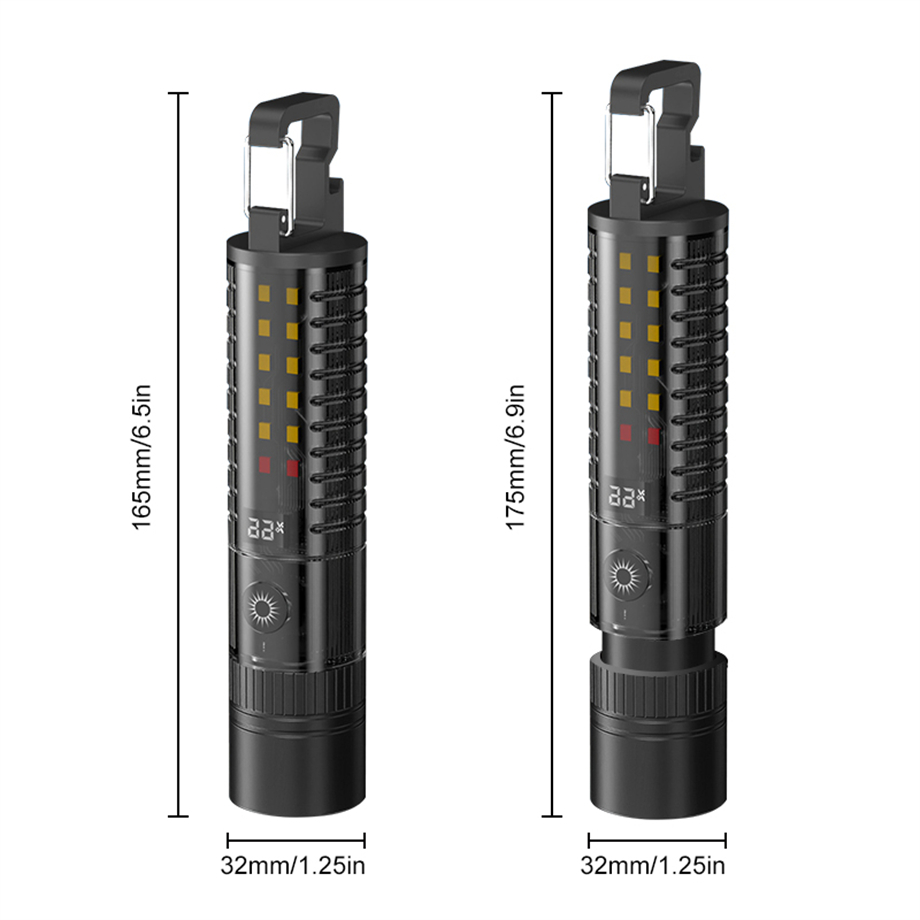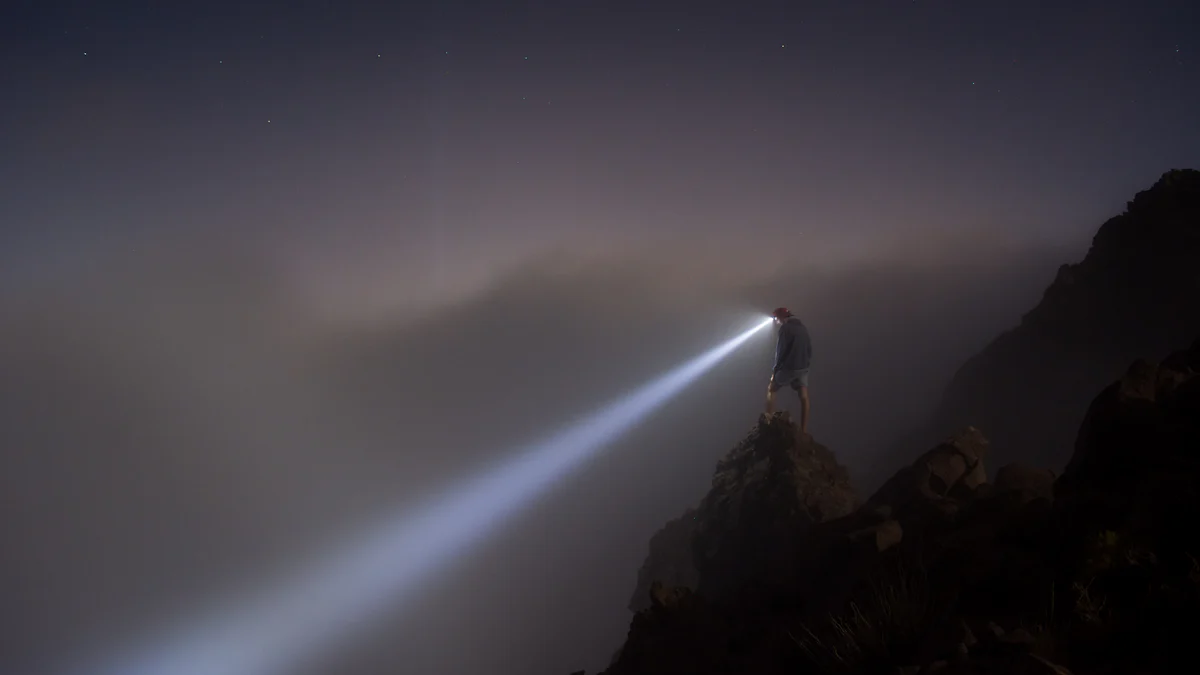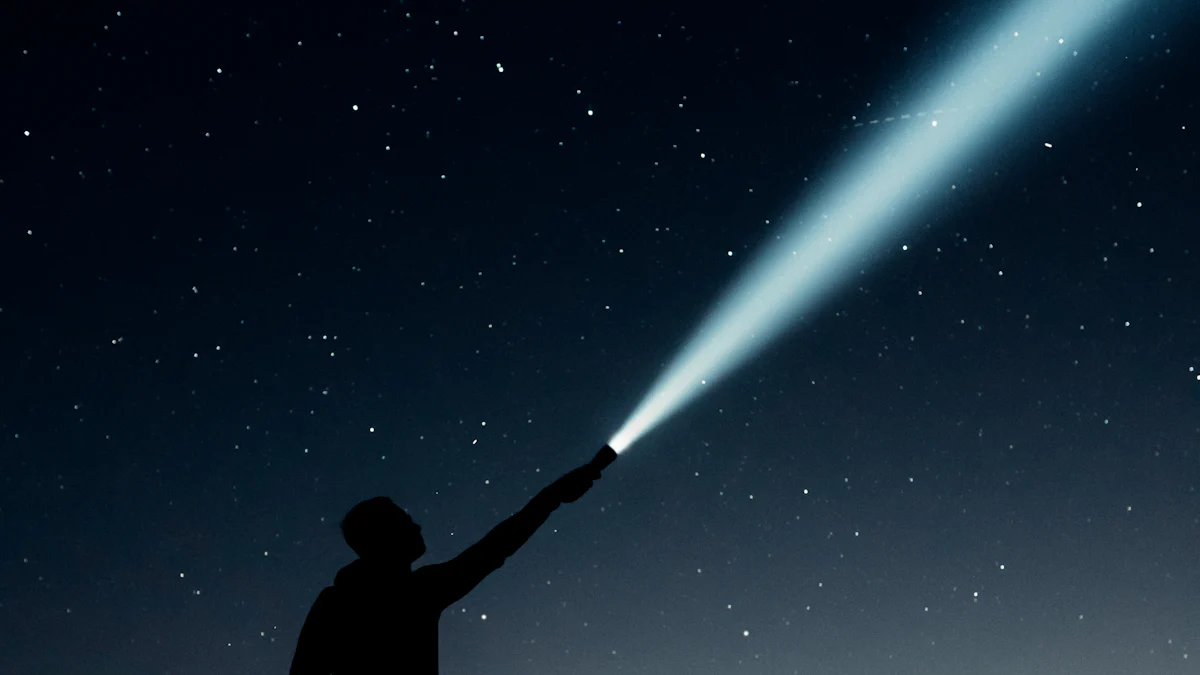How to Assess the Quality of Flashlights Before Making a Wholesale Purchase

When purchasing flashlights in bulk, quality assessment becomes essential. Poor-quality products can harm your reputation and lead to financial losses. Skipping quality checks exposes you to risks like unreliable partnerships, hidden costs, and non-compliance with industry standards. A flashlight that fails to meet expectations can frustrate customers and damage trust. By carefully evaluating products, you ensure durability, performance, and customer satisfaction. Knowing how to assess the quality of flashlights before making a wholesale purchase helps you make informed decisions and avoid costly mistakes.
Key Takeaways
Check how bright it is by looking at lumens. Pick a lumen range that fits how you will use it.
Look at battery life and type. Lithium-ion batteries last longer, and rechargeable ones save money.
Make sure it’s made of strong materials. Flashlights made of aluminum or titanium last longer.
Try out flashlight samples before buying. Test brightness, beam distance, and battery life to check quality.
Learn about the supplier’s reputation. Read reviews and check certifications to find trusted makers.
Key Factors in Flashlight Quality

Brightness and Lumens
When evaluating flashlights, brightness plays a crucial role. The number of lumens determines how much light a flashlight emits. Different use cases require varying lumen ranges. For example:
Use Case | Lumen Range |
|---|---|
Work Light | 90-500 lumens |
General Purpose | 50-100 lumens |
Night Running and Camping | 100-500 lumens |
You should match the number of lumens to the intended purpose. A tactical flashlight for outdoor adventures may need higher lumens for better visibility. However, a general-purpose flashlight for household use can perform well with fewer lumens. Always consider the environment where the flashlight will be used to ensure optimal brightness.
Battery Life and Power Source
Battery life directly impacts the reliability of flashlights. You should assess the type of battery and its lifespan before making a wholesale purchase. Here’s a breakdown of typical battery lifespans:
Battery Type | Typical Lifespan |
|---|---|
Alkaline | 1 to 7 hours |
NiMH | 2 to 5 hours |
Lithium-Ion | 10 to 50 hours |
Lithium Primary | Up to 10 years |
Lithium-ion batteries offer extended usage and are ideal for tactical flashlights or heavy-duty applications. Alkaline batteries, while affordable, may not last as long. Consider rechargeable options for cost-effectiveness and environmental benefits. A flashlight with a reliable power source ensures consistent light output during use.
Durability and Build Quality
Durability is one of the key factors to consider when assessing flashlight quality. The materials used in the flashlight’s construction determine its strength and longevity. Common materials include:
Material | Properties | Uses in Flashlight Housing |
|---|---|---|
Acrylonitrile Butadiene Styrene (ABS) | Durability, Chemical resistance | Common applications in plastic polymer flashlights |
Aluminum Alloy | Lightweight, Heat conduction | High-quality flashlights, Heat dissipation |
Stainless Steel | Strength, Corrosion resistance | Durability, Aesthetic appeal |
Titanium | Strength-to-weight ratio, Corrosion resistance | Premium flashlights, Longevity |
Polymers (e.g., Polystyrene) | Versatility, Cost-effectiveness | Budget-friendly options, Customizability |
You should also evaluate the flashlight’s resistance to impacts, water, and extreme conditions. Tests like the impact test, waterproof test, and temperature test can help you determine the build quality. A durable flashlight ensures long-term performance and reduces replacement costs.
Beam Distance and Focus
Beam distance determines how far a flashlight can project its light. This factor is crucial when selecting flashlights for specific tasks. A flashlight with a longer beam distance is ideal for outdoor activities like hiking or emergency rescue. On the other hand, shorter beam distances work well for everyday use or indoor tasks.
The table below provides a guide to beam distances based on lumens and their best applications:
Lumens | Distance | Best For |
|---|---|---|
1–250 | Up to 80 meters | Everyday and leisure activities in dim conditions |
160–400 | Up to 100 meters | Camping, hiking, backpacking |
400–1000 | Up to 200 meters | Hiking, backpacking, caving, campervan engine repair |
1000–3000 | Up to 350 meters | Fishing, hunting, rock climbing |
3000–7000 | Up to 500 meters | Extreme weather conditions, mountaineering, emergency rescue |
7000–15000 | Up to 700 meters | Extreme weather conditions, emergency rescue, lighting large areas |
When assessing beam distance, consider the flashlight's focus capabilities. Adjustable focus allows you to switch between a wide floodlight and a concentrated spotlight. This feature enhances versatility, making the flashlight suitable for multiple scenarios. A tactical flashlight often includes this functionality, ensuring optimal performance in demanding situations.
Water Resistance and Weatherproofing
Water resistance and weatherproofing are essential for flashlights used in outdoor or harsh environments. These features protect the flashlight from water damage and ensure reliable performance in challenging conditions.
Flashlights labeled as water-resistant can handle light rain or splashes but should not be submerged. Waterproof flashlights, however, are designed to withstand prolonged submersion without damage. They are ideal for activities like fishing, boating, or emergency rescue in flooded areas.
Here are the key differences:
Water-resistant: Suitable for light rain and splashes but not for submersion.
Waterproof: Can be submerged without damage, making them perfect for extreme environments.
When evaluating water resistance, check the flashlight's IP (Ingress Protection) rating. For example, an IPX4 rating indicates resistance to splashes, while an IPX7 rating ensures protection during submersion up to one meter. Choosing the right level of water resistance depends on the intended use of the flashlight.
How to Assess the Quality of Flashlights Before Making a Wholesale Purchase
Testing Flashlight Samples
Testing flashlight samples is one of the most effective ways to ensure you choose flashlights that meet your expectations. Request samples from wholesale suppliers to evaluate their performance. Focus on key aspects like brightness, beam distance, and battery life. These tests help you confirm that the flashlights in bulk align with your quality standards.
Use specific testing methods to assess product quality. For example:
Testing Method | Purpose |
|---|---|
Luminous Intensity Measurement | Measure the brightness of the flashlight in a specific direction. |
Shakeout Test | Assess the durability and scratch resistance of the flashlight surface. |
Bending Test | Determine brightness retention after bending. |
Salty Spray Test | Evaluate corrosion resistance in humid conditions. |
Ultraviolet Radiation Test | Check for changes in light output or color after UV exposure. |
Environmental Test | Test durability in extreme temperatures. |
Vibration Test | Assess damage from vibrations. |
Switch Test | Evaluate the durability of the switch mechanism. |
Temperature Test | Analyze heat dissipation capabilities. |
These methods ensure you source reliable flashlights that perform well under various conditions. Testing samples also helps you identify high-performance flashlights with durable materials and consistent light output.
Checking Certifications and Standards
Certifications and standards play a vital role in assessing flashlight quality. Look for certifications that confirm compliance with safety and performance benchmarks. Some of the most recognized certifications include:
Certification | Description |
|---|---|
UL Certification | Indicates compliance with safety standards for various products, including flashlights. |
FCC Certification | Ensures electronic devices meet radiation standards and do not interfere with other equipment. |
Energy Star | Promotes energy efficiency and identifies products meeting specific performance criteria. |
DLC Approved | Recognizes high-quality, energy-efficient lighting products endorsed by utilities and government agencies. |
ETL Certification | A safety certification from Intertek indicating compliance with established safety standards. |
VDE Certification | A prestigious certification in Europe ensuring compliance with safety and quality standards for electrical products. |
BS Certification | Developed by the British Standards Institution, ensuring quality, safety, and performance of products in the UK. |
UKCA Certification | A conformity assessment process for products in the UK market, replacing the CE marking post-Brexit. |
Certifications like UL and FCC ensure the flashlights meet safety and radiation standards. Energy Star and DLC Approved labels highlight energy-efficient models. These certifications help you identify high-quality flashlights that meet industry standards.
Researching Flashlight Supplier Reputation
Evaluating flashlight suppliers is essential when purchasing flashlights in bulk. A reputable supplier ensures consistent product quality and reliable models. Look for suppliers offering durable materials, high-performance LEDs, and customization options. Check reviews, testimonials, and case studies to assess their reliability.
Criteria | Details |
|---|---|
Product Quality | Look for durable materials, high-performance LEDs, and certifications like CE, RoHS, or ISO. |
Customization Options | Ensure the supplier offers branding, design, and functional modifications. |
Reputation | Check reviews, testimonials, and case studies for reliability. |
Avoid common red flags when researching wholesale suppliers. Rushing the vetting process can lead to unreliable partnerships. Ignoring product certifications risks sourcing substandard flashlights. Always request a detailed cost breakdown to avoid hidden expenses. By thoroughly researching suppliers, you can evaluate flashlight suppliers effectively and secure bulk prices for high-quality flashlights.
Sourcing Strategies for Wholesale Flashlight Purchases

Finding Reliable Flashlight Suppliers
Finding a reliable flashlight supplier is crucial for ensuring consistent product quality and timely delivery. Start by exploring online platforms like Alibaba and Global Sources. These platforms connect you with manufacturers worldwide and allow you to filter suppliers based on product type, region, or certifications. This makes it easier to identify suppliers that meet your specific needs.
Trade shows also offer excellent opportunities to connect with potential suppliers in person. At these events, you can evaluate flashlight samples, ask detailed questions, and establish relationships. This hands-on approach often leads to better sourcing decisions.
When evaluating suppliers, consider key criteria to ensure reliability:
Criteria | Details |
|---|---|
Product Quality | Look for durable materials, high-performance LEDs, and certifications like CE, RoHS, or ISO. |
Customization Options | Ensure the supplier offers branding, design, and functional modifications. |
Pricing | Competitive pricing without compromising on quality. |
Production Capacity | Ability to handle bulk orders and meet deadlines. |
Reputation | Check reviews, testimonials, and case studies for reliability. |
After-Sales Support | Warranty, return policies, and customer service availability. |
By focusing on these factors, you can confidently choose a flashlight supplier that aligns with your business goals.
Negotiating Prices and Bulk Discounts
Negotiating prices effectively can save you money on wholesale flashlight purchases. Start by researching market prices to identify competitive rates. Use this knowledge to leverage bulk orders, which often lead to significant discounts. Suppliers are more likely to offer better deals when you highlight the benefits of large-volume purchases.
Building rapport with suppliers is another effective strategy. A strong relationship fosters trust and cooperation, making it easier to negotiate favorable terms. Understanding volume discounts also helps you secure better pricing. For example, suppliers may offer tiered discounts based on order size.
Long-term partnerships with suppliers often result in better pricing and consistent quality. By emphasizing mutual benefits, you can create a win-win situation that supports your business growth.
Evaluating Warranty and After-Sales Support
Warranty and after-sales support are essential when sourcing flashlights in bulk. A reliable flashlight supplier should provide clear warranty terms that cover manufacturing defects and performance issues. This ensures you can address any problems without incurring additional costs.
Evaluate the supplier’s return policies and customer service availability. A supplier with responsive support can resolve issues quickly, minimizing disruptions to your business. After-sales support also includes access to replacement parts or repair services, which can extend the lifespan of your flashlights.
Prioritize suppliers that offer comprehensive warranties and dependable support. This not only protects your investment but also enhances customer satisfaction by ensuring high-quality products.
Assessing flashlight quality before wholesale purchases ensures you deliver reliable products to your customers. Focus on key factors like brightness, durability, and battery life. These elements determine performance, usability, and longevity. Testing samples and checking certifications help you verify quality. Researching supplier reputation ensures you partner with reliable manufacturers.
Prioritize sourcing strategies to streamline operations. Build strong supplier relationships to secure better deals and consistent deliveries. Stay informed about market trends to meet customer expectations. By focusing on quality and efficient logistics, you reduce returns, enhance customer satisfaction, and achieve long-term cost savings.
FAQ
What is the ideal lumen range for general-purpose flashlights?
The ideal lumen range for general-purpose flashlights is 50–100 lumens. This range provides sufficient brightness for everyday tasks like finding items in the dark or navigating indoors without overwhelming light output.
How can you test the durability of a flashlight?
You can test durability by performing impact, vibration, and temperature tests. These methods simulate real-world conditions to ensure the flashlight withstands drops, extreme temperatures, and rough handling.
Why are certifications important when buying flashlights in bulk?
Certifications ensure the flashlights meet safety and performance standards. Look for certifications like UL, FCC, or CE to confirm the products are reliable, energy-efficient, and compliant with industry regulations.
What should you prioritize when choosing a flashlight supplier?
Prioritize suppliers with a strong reputation, product certifications, and customization options. Reliable suppliers also offer competitive pricing, bulk discounts, and responsive after-sales support.
How do IP ratings help in selecting water-resistant flashlights?
IP ratings indicate the level of protection against water and dust. For example, an IPX4 rating ensures resistance to splashes, while an IPX7 rating allows submersion up to one meter. Choose based on the intended use.
See Also
Selecting Premium Flashlights for Your Wholesale Needs
Finding Top-Quality Flashlights for Bulk Buying
Guidelines for Acquiring Dependable Wholesale Flashlights
